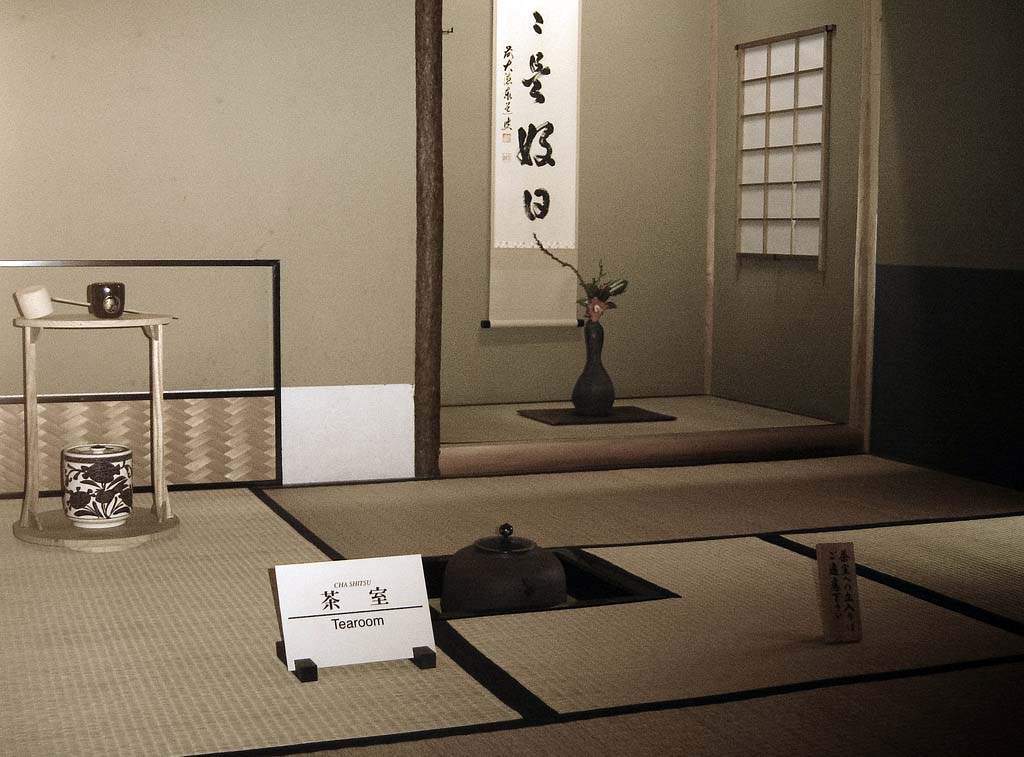戦国時代、最初期の茶室は六畳間でした。今でも日本のアパートに見る間取りですが、ここで茶会をすると、使われない空間を余分に感じます。名物の茶道具を飾り付けるのには良くとも、そうでない茶人には不向きとされました。こうして余分な空間を削った、四畳半がはじまります。やがて侘び茶の発達にともない茶室が工夫され、三畳敷が登場してきました。そして千利休にいたり、一畳台目という、最小限の空間が生まれたのです。
In the early Warring Sates Period, tea gatherings were held in 6 tatami mat rooms, about 2.5m x 3.5 m, which is still a standard size room for the Japanese. However, if we held a tea gathering in a 6 mat tea room, we would recognize that even a 6 mat room is too large for establishing a good relationship between a host and guests.
Historically speaking, a 6 mat tea room was a suitable area for displaying the valuable tea utensils called meibutsu, and a tea man who did not possess any valuable utensils did not need such a spacious room.
This led to people building smaller rooms to cut the excess. As the simple and restrained style of tea called wabi-cha became more popular, three mat tea rooms came to be built. The smallest tea room, a one and a half mat room, finally appeared in Rikyu’s era.

